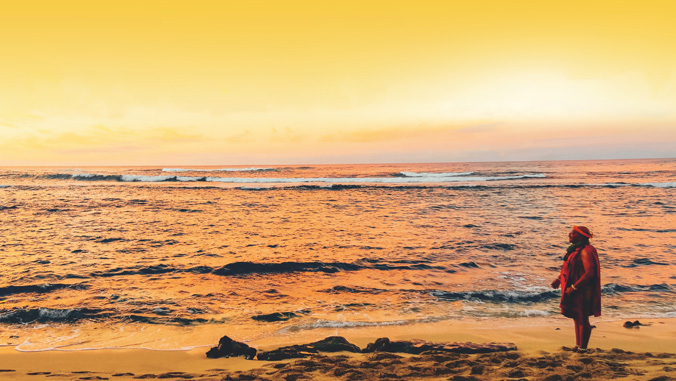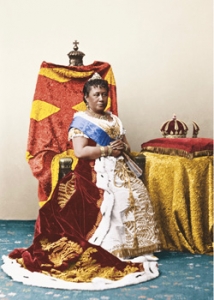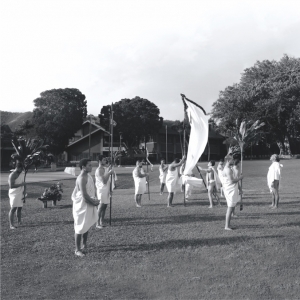
A collaborative commitment to revitalize Native Hawaiian culture and language at Kapiʻolani Community College has produced a fresh chapter for the 44-acre campus and its community. Members of the College’s Native Hawaiian council, ʻAha Kalāualani, recently published a bilingual handbook to help students, faculty and staff connect with the campus’ cultural roots and history.
In July, freshly printed copies of the 88-page book, Ka Wehena Kaiao (Breaking of Dawn), were gathered for distribution. The cultural guide, written in ʻōlelo Hawaiʻi (Hawaiian language) and English, magnifies the college’s heartbeat, covering the ʻāina (land) it sprawls across, lawena waiwai (values), mele (songs) compositions and historical footprints.
“Ka Wehena Kaiao engages all the members of the campus community in thinking about Kapiʻolani Community College in a broader and deeper sense, about the history of our namesake and the land on which the campus sits,” said Louise Pagotto, Kapiʻolani CC chancellor. “The publication of oli (chants) and mele will allow everyone to participate more fully when protocol events take place. No longer will they need to stand on the periphery as we chant at graduation or other important occasions.”
Pagotto derived the idea of a guidebook after reading a similar book while visiting Waiariki Institute of Technology in Rotorua, Aotearoa, in 2015. The Kapiʻolani CC publication is funded by the U.S. Department of Education Title III Part A Grant, Native Hawaiian–Serving Institutions Program, Kauhale Ke Kuleana.

Honor ka inoa (the name)
Within the first few pages, readers immediately learn about the college’s royal namesake, Julia NāpelakapuoKākaʻe Kapiʻolani born in Hilo on December 31, 1834. Kapiʻolani would go on to become queen of the Kingdom of Hawaiʻi, reigning alongside her husband, King David Laʻamea Kalākaua.
Concerned about the high death rate from foreign diseases among Kānaka ʻŌiwi or Native Hawaiians, the queen worked to finance what is known today as the Kapiʻolani Medical Center for Women and Children.
Hōʻoia ʻĀina, Land Acknowledgement
The book identifies the acknowledgement by the University of Hawaiʻi regarding the land the college stands on and recognizing Hawaiʻi as an Indigenous space, which guides what is spoken and acted upon.
Readers are educated about the college’s specific location using the traditional Hawaiian ahupuaʻa (land division) system. Kapiʻolani CC sits in the moku (district) of Kona within the ahupuaʻa of Pālolo. A collection of oli and mele written by faculty and staff are also included. Many pay homage to legendary sites in the surrounding area—among them, Hōʻea ʻo Kalāhū, a mele inspired by legendary places and winds surrounding the college. The piece was composed by ʻŌiwi faculty and staff members Kahelelani Cruz and Keauhou Mitchell-Aldan.

“The size of Ka Wehena Kaiao is important to the engagement; it can fit in your back pocket (like a handbook) but I hope people won’t keep it there,” said Kapulani Landgraf, Title III Project Director and Kīpū (Director) of ʻAha Kalāualani at Kapiʻolani CC. “We need everyone at the campus to join us in participating and learning about Hawaiian culture and protocol. We cannot move as a college in being an Indigenous-serving institution if only the Council or Native Hawaiians engage. It is all our kuleana if we choose to work/study at Kapiʻolani CC and make Hawaiʻi our home.“
Readers can also grasp a sense of the college’s history. Its current location first opened to 750 students in 1975 but its official beginnings trace back to 1946, when the school started as a hotel and restaurant program. It would move to various sites on Oʻahu before settling where it is today.
Kapiʻolani CC faculty, staff and administrators received copies of the book in late August. Digital copies will be distributed to the college’s students in mid September, before eventually becoming available to the entire UH System.
For more information email: laualani@hawaii.edu.

